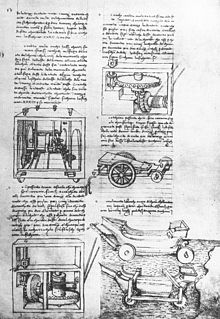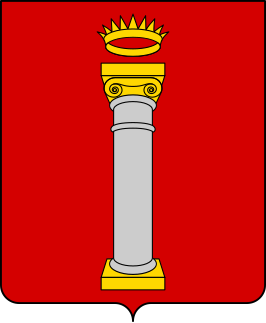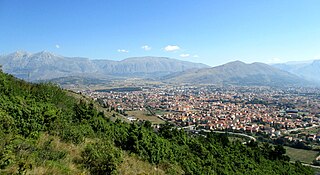| Rocca Orsini | |
|---|---|
| Scurcola Marsicana | |
 Rocca Orsini | |
| Coordinates | 42°04′01″N13°20′29″E / 42.066867°N 13.341307°E |
| Type | Fortess |
| Site history | |
| Built | 13th-16th century |
Rocca Orsini (Italian for Stronghold of Orsini family ) is a Middle Ages castle in Scurcola Marsicana, Province of L'Aquila (Abruzzo). [1]

Italian is a Romance language of the Indo-European language family. Italian descended from the Vulgar Latin of the Roman Empire and, together with Sardinian, is by most measures the closest language to it of the Romance languages. Italian is an official language in Italy, Switzerland, San Marino and Vatican City. It has an official minority status in western Istria. It formerly had official status in Albania, Malta, Monaco, Montenegro (Kotor) and Greece, and is generally understood in Corsica and Savoie. It also used to be an official language in the former Italian East Africa and Italian North Africa, where it still plays a significant role in various sectors. Italian is also spoken by large expatriate communities in the Americas and Australia. Italian is included under the languages covered by the European Charter for Regional or Minority languages in Bosnia and Herzegovina and in Romania, although Italian is neither a co-official nor a protected language in these countries. Many speakers of Italian are native bilinguals of both Italian and other regional languages.

The Orsini family is an Italian noble family that was one of the most influential princely families in medieval Italy and Renaissance Rome. Members of the Orsini family include three popes: Celestine III (1191–1198), Nicholas III (1277–1280), and Benedict XIII (1724–1730). In addition, the family membership includes 34 cardinals, numerous condottieri, and other significant political and religious figures.

In the history of Europe, the Middle Ages lasted from the 5th to the 15th century. It began with the fall of the Western Roman Empire and merged into the Renaissance and the Age of Discovery. The Middle Ages is the middle period of the three traditional divisions of Western history: classical antiquity, the medieval period, and the modern period. The medieval period is itself subdivided into the Early, High, and Late Middle Ages.























